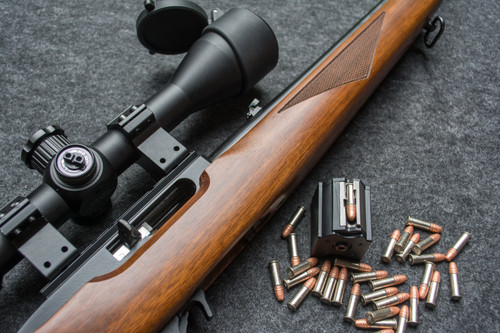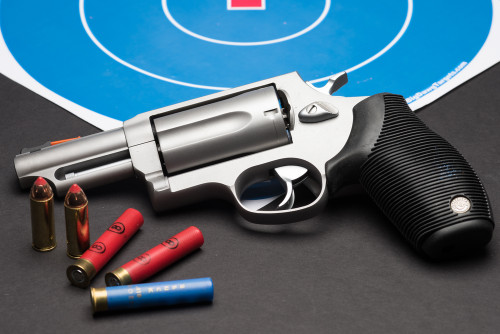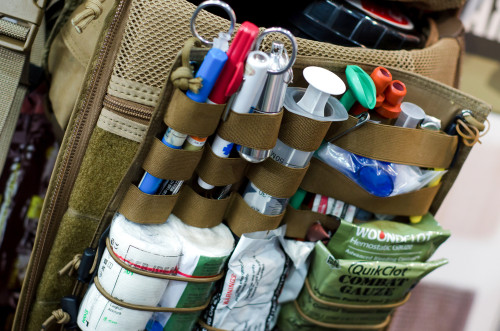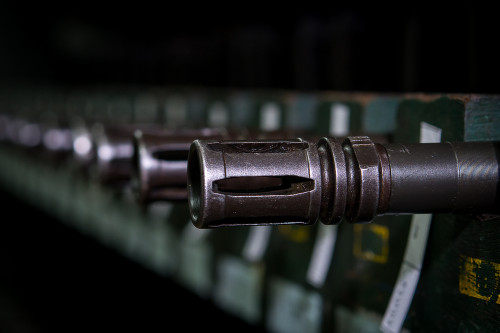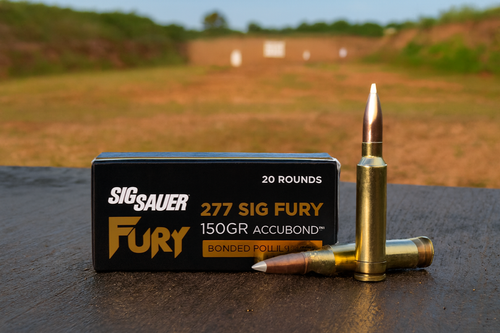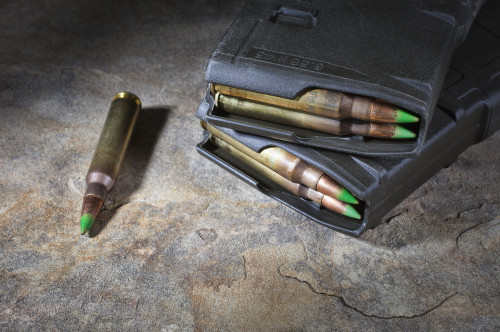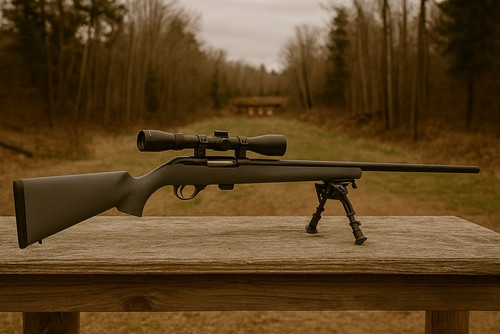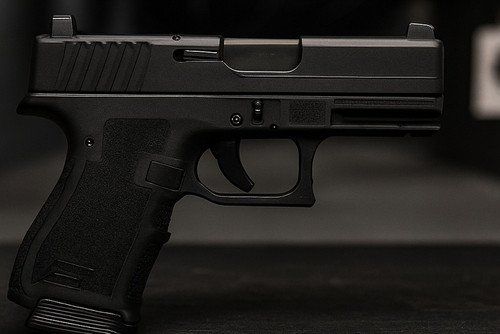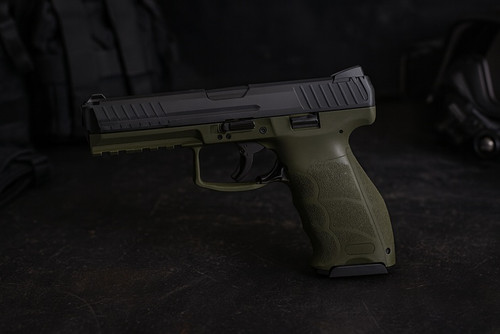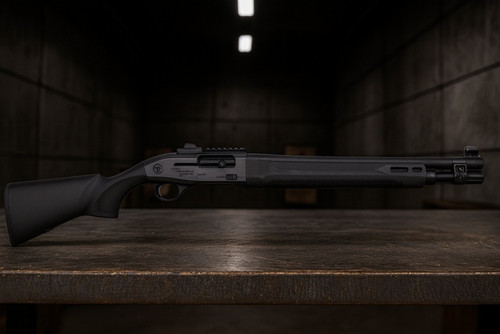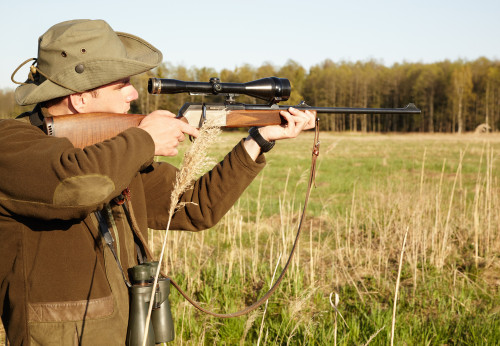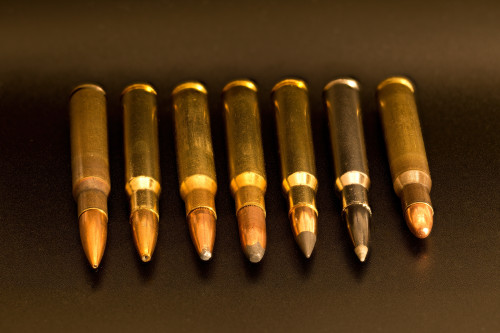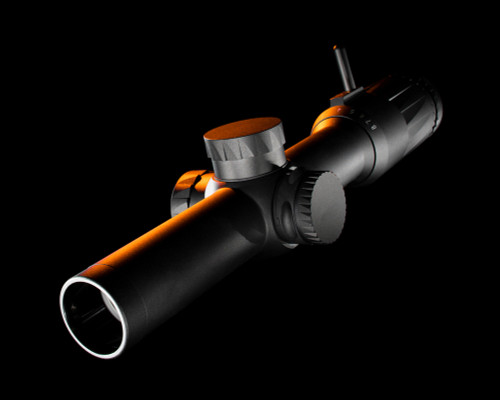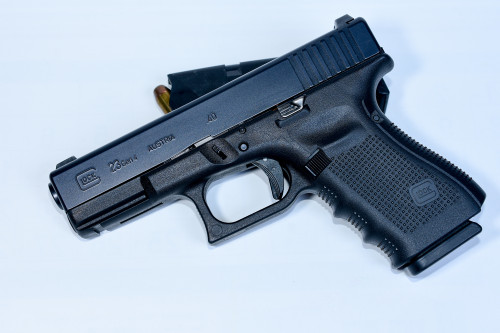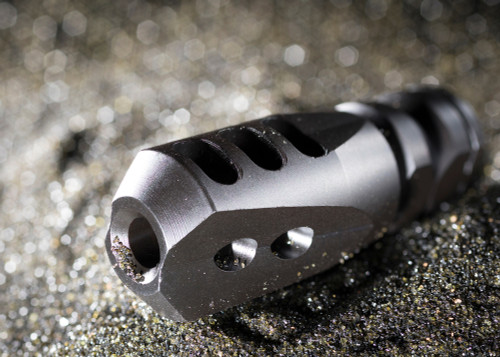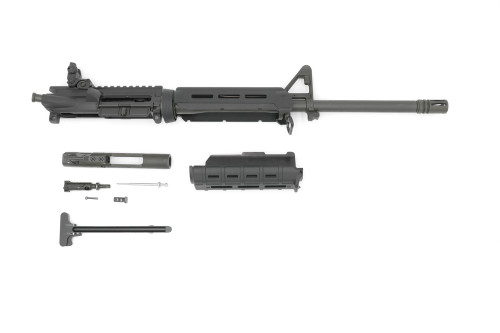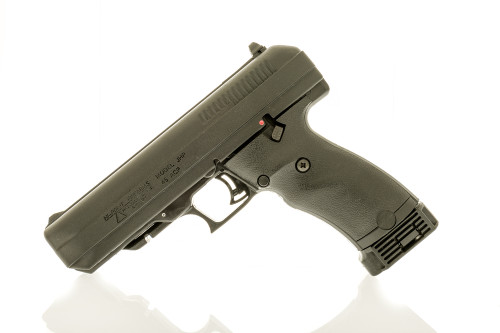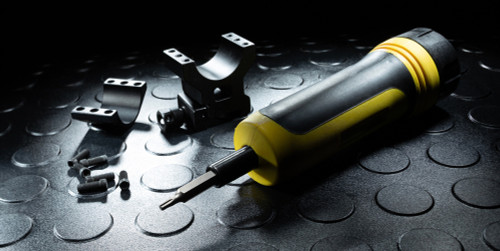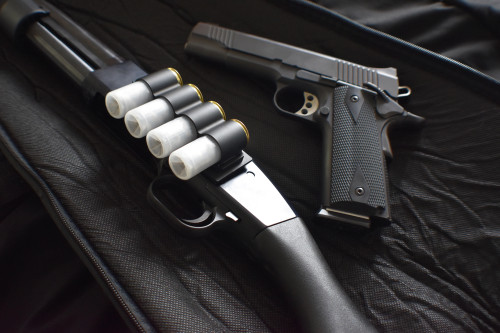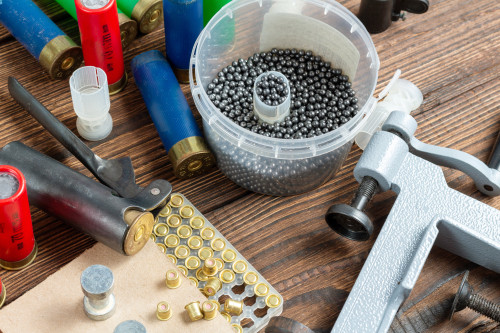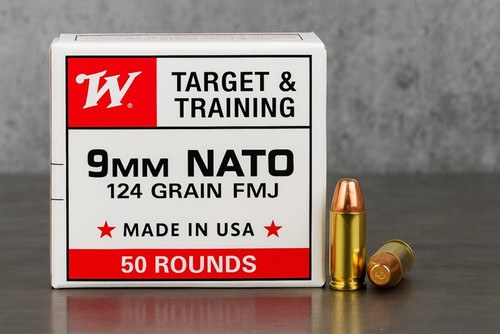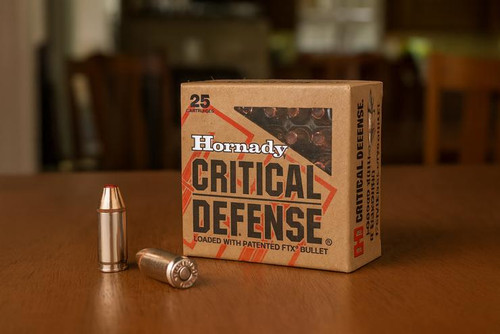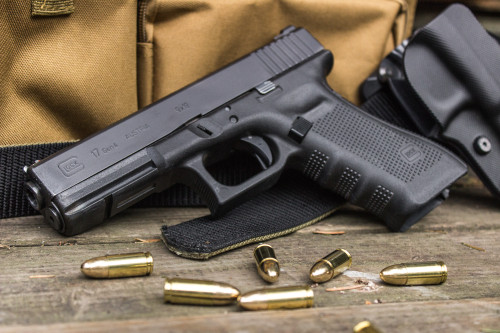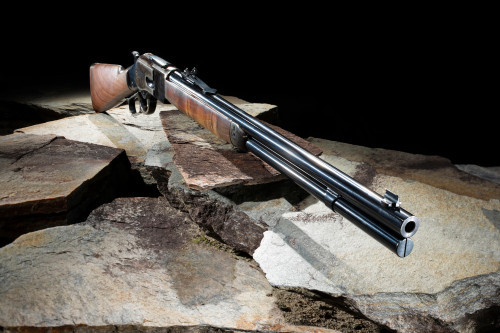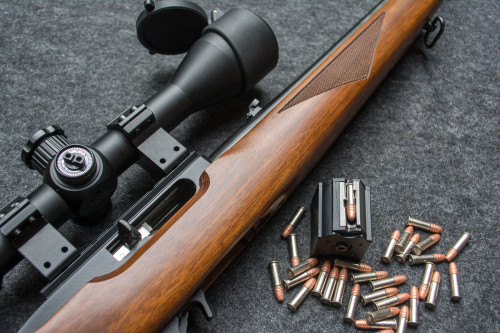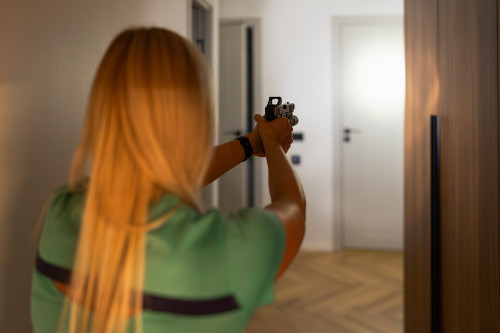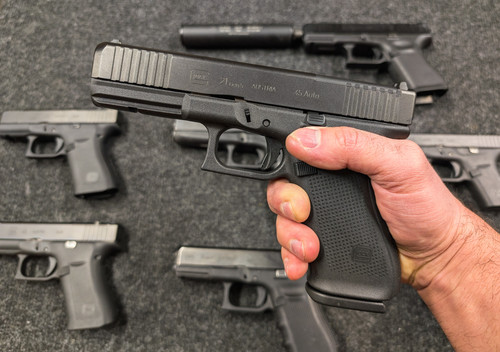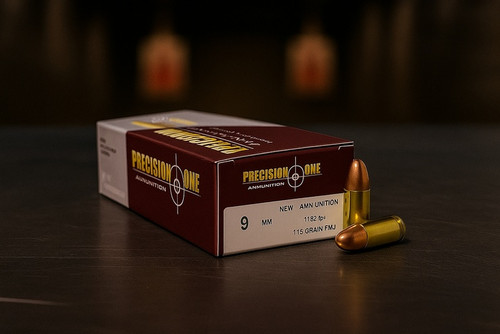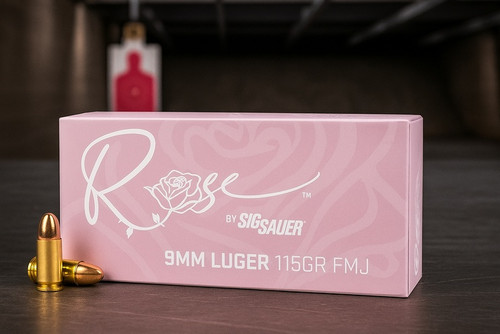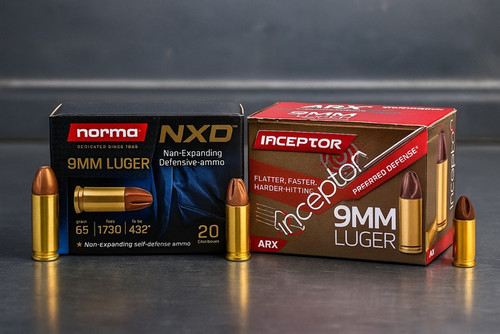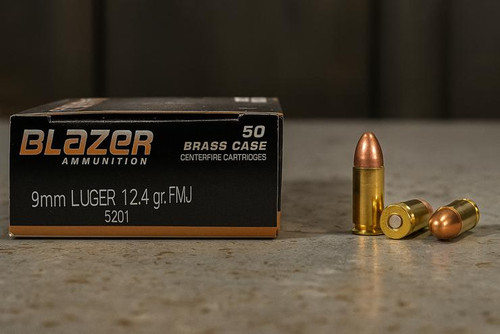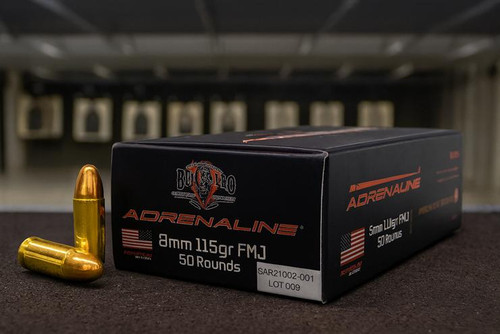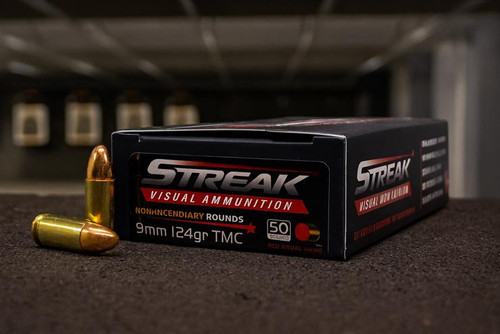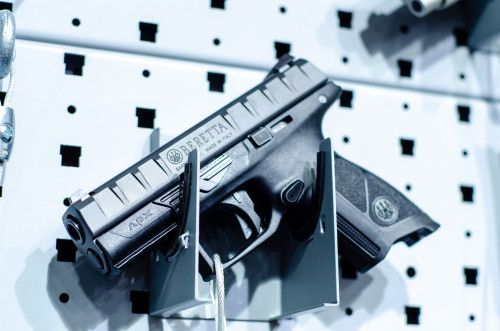The “Goldilocks” barrel length for the AR-15 has been a subject of intense debate for a long time. Some laud longer barrel lengths, while others praise shorter ones. But is there actually such a thing as the “best AR-15 barrel length?”
Not really. Like anything else in the firearms world, your goals dictate your gear. Some are good at everything, while others are perfect for one specific thing. Some are tons of fun — but can be illegal (or require extra paperwork to legally own).
If you’ve been agonizing over getting the right AR-15 barrel length for your next build, relax. We’ll break down the pros and cons of the most common AR-15 barrel lengths so you can make an informed decision.
Introduction to AR-15 Barrels and Their Importance
When a firing pin hits a cartridge, it ignites a charge of explosives (the “powder”). This explosion generates expanding gas. The barrel channels the direction of that gas, giving it an easy way to escape and pushing the bullet out of the muzzle along with it. The longer the barrel, the more gas acts on the bullet, imparting it with force and speed (to a point).
From the tiniest .22 caliber pistols to the mightiest artillery pieces, the barrel is one of the most critical components of any gun — but why? Let’s look at some of the key variables.
Range
Longer barrels allow more gas to push on the bullet. The more gas pushing on the bullet, the more force it has. So, longer barrels generally allow a bullet to shoot flatter and travel farther.
These factors make barrel length one of the biggest variables in any weapons platform. It directly affects “where the magic happens.” That’s why it’s so important to understand how barrels work.
Penetration
The greater force imparted by a longer barrel translates to more penetrating power as the bullet travels through the air. So longer-barreled guns are better at taking out targets hiding behind obstacles or wearing light ballistic armor.
Sight Radius
Longer barrels are generally more accurate because they give the shooter a longer sight radius, a feature that can enhance the shooter’s accuracy. However, a longer sight radius will only help you aim if you’re using iron sights. All optics (from high-precision long-range scopes to the lowliest red dot) have an effectively infinite sight radius. So, if you’re using a short-barreled AR, go ahead and slap a red dot on it!
Weight
Longer barrels aren’t perfect, though. For one, they add a bunch of weight to a weapon. The barrel is one of the only components that needs to be made of highly durable metal — to contain the power of an explosion. As a result, the barrel is probably the single heaviest component on your rifle.
Maneuverability
Additionally, longer barrels are unwieldy and harder to maneuver inside buildings and around corners. If someone’s waiting around a corner to ambush you, an 18-inch barrel gives them a nice heads up that you’re coming. When you get to 20-inch barrels or longer, they aren’t good for much other than long-distance shooting.
Gas Systems
Your barrel length will dictate which gas system your gun uses. This, in turn, impacts other factors, most notably perceived recoil. Longer gas systems have more mass, so they absorb a lot of the gun’s recoil and feel smoother to shoot.
However, that doesn’t mean long gas systems are flawless. Longer gas systems don’t play nice with every type of ammunition. If you’re running a longer-length gas system, you’ll want to experiment to determine which types of ammo your gun likes.
There are four lengths of AR-15 gas systems: pistol, carbine, mid-length, and rifle.
Legal Considerations
Barrel length gets a lot of attention because it’s one of the factors that determine a firearm’s legality. If you get caught with an illegal firearm, you can be charged with a felony and face up to 10 years in federal prison, $10,000 in fines, or both. Plus, since the AR-15s is such a modular system, it’s easy to accidentally break the law by using an illegally short barrel.
The ATF regulates any rifle with a barrel length less than 16 inches as a “short-barreled rifle,” or “SBR.” If you buy or build an SBR, you need to file paperwork with the ATF, list your address on a registry, and pay $200 every year for a tax stamp. If you ever want to move the gun out of the state where you live, you need to inform the ATF in writing.
Some of the barrel lengths we mention in this post (specifically 10.5 and 14.5) can be classified as short-barreled when coupled with a lower receiver that has a stock. If you use a barrel with a length of less than 16 inches attached to a lower receiver that has never had a stock, you can legally use the gun as a “pistol” without registering it as an SBR.
In addition to the federal rules we covered here, your individual state or municipality may have its own rules governing barrel length. Some states like California specifically outlaw SBRs. That means some lengths simply might not be an option for you. If you’re going to run a barrel less than 16 inches, make sure you do so legally.
Caliber
For the sake of consistency, we’ll assume that all of the ARs we mention in this post are chambered in 5.56 (.223). If this is how your rifle is chambered, caliber isn’t much of a consideration here.
But while .223/5.56 is by far the most common caliber you’ll find AR-15s chambered in, it isn’t the only option. Bear in mind that if you’re shooting an AR chambered in a caliber other than 5.56/.223 (e.g. .300 Blackout), all of this information will change. We’ll address the relationship with caliber and barrel length later on.
Now, let’s look at specific barrel lengths to compare their performance.
10.5-Inch Barrel
| Muzzle Velocity | About 2,500 ft/sec |
| Max Range | 100-200 yards |
| Weight | About 1 lb |
| Gas System | Carbine |
| Good For | Home defense, short ranges |
As one of the shortest barrel lengths out there, the 10.5-inch barrel is almost “too short” to be effective outside of some specific scenarios. In fact, 10.5-inch barrels are so short that they don’t allow all of the powder in a cartridge to burn off before the bullet exits the muzzle. They’ve even been known to shoot fireballs from their muzzles thanks to that unburnt powder.
As a result, a 10.5-inch AR is EXTREMELY LOUD. They also have more felt recoil than any other length on this list. If you choose a short-barreled AR like this, consider using a suppressor.
This short barrel length also has limited range. You won’t ring steel at 1,000 yards with a 10.5-inch AR. Instead, use these at ranges of 200 yards or less. Realistically, this barrel is most effective at about 100 yards, but that may not be a problem depending on your goals. Most combat engagements in urban environments happen closer than 100 yards.
Keep in mind that an AR-15 with a stock and a 10.5-inch barrel counts as an SBR, so be sure to consider the laws here.
But 10.5-inch barrels aren’t inherently useless. For one, they’re very light and maneuverable, which makes them easy to deploy inside a building or vehicle. This was the original reason the US Special Operations Command (SOCOM) started equipping operators with them.
In addition, 10.5-inch barrels are extremely concealable. If you got a piston-operated AR (which would allow the gun’s stock to fold) and equipped the gun with a folding stock, you could fit it in a backpack. That makes it an excellent “truck gun.”
Pros and Cons
Pros:
- Lightweight and ergonomic.
- Easy to move around inside a building or vehicle.
- Looks cool.
- Great choice for a suppressor host, since the rifle’s overall length won’t be too egregious.
Cons:
- Low bullet energy.
- Extremely loud, shoots fireballs without a muzzle device.
- Short range, usually 200 yards or less.
- Most recoil out of all the options on here.
14.5-Inch Barrel
| Muzzle Velocity | 2,750 ft/sec |
| Max Range | 300 yards |
| Weight | About 1.5 lbs |
| Gas System | Mid-length (carbine also works) |
| Good For | Home defense, competition shooting |
If you’ve ever watched a movie about the post-Global War on Terror military or played modern video games, you’re familiar with the 14.5-inch AR-15, the barrel length the US military currently uses for its M4 carbines. If you want to make an M4 clone, this is the barrel length for you.
There’s a reason the military decided to go with the 14.5-inch AR. It’s a great combination of lightweight, handiness, and functionality. It’s more than adequate for clearing buildings or long-distance strikes. If you’re looking for a “do-it-all” length, you could do worse than the 14.5-inch barrel.
If you want to use a 14.5-inch barrel, you will have a choice to make. You could use either a mid-length or carbine-length gas system. In this case, we’d recommend the mid-length system, which will give you less perceived recoil and increase your weapon’s total operational life.
Here’s one particularly nifty thing about the 14.5-inch AR-15 barrel. If you permanently attach a muzzle device to the end of the barrel (known as “pinning and welding”), and it brings your barrel’s length to 16 inches or more, the ATF doesn’t consider it an SBR. As a result, you don’t need to register it with the ATF or pay $200 annually for a tax stamp. This has helped to make pinned and welded AR-15 barrels extremely popular.
Pros and Cons
Pros:
- Good combination of maneuverability and range.
- You can permanently attach a muzzle device to a 14.5-inch barrel to bring it above 16 inches to make it legally a “rifle.”
- About 300 yard max range.
- Still a good suppressor host.
- Perfect length for M4 clone (“M4gery”).
Cons:
- If you don’t permanently attach a muzzle device, the gun may qualify as an SBR.
- Lower effective range and muzzle velocity than longer inch barrels.
16-Inch Barrel
| Muzzle Velocity | 2,800 ft/sec |
| Max Range | 400 yards |
| Weight | About 1.5-2 lbs |
| Gas System | Mid-length |
| Good For | Home defense, competition shooting |
Now that we’ve covered the most common “short barrel” lengths (the 14.5 is more like short-mid), we’ve arrived at the ubiquitous 16-inch barrel.
By far the most popular barrel length for AR-15s, the 16-inch barrel has a lot in common with the 14.5-inch barrel. The 16- and 14.5-inch barrels will have fairly similar felt recoil since they both use mid-length gas systems. They’re both “one-size-fits-most” guns, capable of excelling in a wide variety of situations. The only real difference is that the 16-inch barrel sacrifices a bit of the maneuverability for improved muzzle velocity and range.
Here’s another great thing about 16-inch AR barrels. Nearly every company out there makes them, so you have a ton of options to choose from. That makes them a great fit for anyone wanting to build a rifle to their own specifications.
Pros and Cons
Pros:
- Probably the most common barrel length out there, so you’ll never have trouble finding one.
- Great combination of maneuverability, weight, range, and energy.
- A “do-it-all” barrel length.
- 400-500 yard max range for most shooters.
- Only about 1.5-2 lbs.
Cons:
- If you add a suppressor, it’s going to feel really long.
- Not as good at defeating armor as longer barrels.
18-Inch Barrel
| Muzzle Velocity | 3050 ft/sec |
| Max Range | 550 yards |
| Weight | About 2.5 lbs |
| Gas System | Mid- or rifle-length |
| Good For | Long-distance shooting |
An 18-inch AR follows the same trend you’ve seen throughout this list. It has a better range than a 16-inch barrel, reaching out to 650 yards or so. It also has better ballistics than a 16-inch barrel, meaning that a bullet will travel straighter out of an 18-inch barrel for longer before beginning to fall due to gravity.
In addition to their ballistics, 18-inch barrels may also offer a smoother ride than shorter barrels. That’s because 18-inch barrels allow you to move up from a mid-length to a rifle-length gas system.
However, 18-inch barrels can be finicky when it comes to gas systems. A mid-length system may have more perceived recoil, but it’ll eat any ammo you feed it. A rifle-length system in an 18-inch barrel, in contrast, will definitely kick less. But it may also be a little pickier with the ammo you feed it. If you notice an 18-inch barrel failing to properly cycle, try switching your ammo.
Pros and Cons
Pros:
- Increased range over 16-inch barrel.
- Relatively low recoil.
- More capable of defeating armor.
Cons:
- Heavier than a 16-inch barrel.
- 2.5-ish lbs.
20-Inch Barrel
| Muzzle Velocity | 3100 ft/sec |
| Max Range | 650 yards |
| Weight | 2.5-3 lbs |
| Gas System | Rifle-length |
| Good For | Long-distance shooting |
If you want to experience the AR platform the way it was originally designed, the 20-inch barrel is the way to do it. When Eugene Stoner (yes, that’s his real name) first designed the M-16 for the US military, he built the gun with a 20-inch barrel.
He did so because the military wanted a gun with a muzzle velocity greater than 3,000 feet per second, the required force to kill a human at 600 yards. These days, it seems a little bit like overkill, but it’s nice knowing that a 20-inch AR is what the US military itself chose for long-distance engagements.
Unlike its smaller 18-inch cousin,, a 20-inch barrel is fully at home with a rifle-length gas system. It won’t feature the same ammo-dependent cycling problems that you’d see running the same gas system on a shorter barrel. It also has much less perceived recoil than shorter-barreled guns, thanks to its gas system and higher weight.
While there’s plenty to love about a 20-inch AR barrel, it’s not perfect. For one, it’s noticeably more front-heavy than a 14.5-inch or even a 16-inch barrel. That means you don’t want to lug this thing through a building or around corners.
Pros and Cons
Pros:
- Relatively low recoil.
- High penetration.
- Can defeat some body armor.
Cons:
- Even heavier than an 18-inch gun (closer to 3 lbs).
- Not ideal for use indoors or at close ranges.
24-Inch Barrel
| Muzzle Velocity | 3,200 ft/sec |
| Max Range | 700-800 yards |
| Weight | 3+ lbs |
| Gas System | Rifle-length |
| Good For | Long-distance shooting |
Now we’ve reached the edge of functional AR-15 barrel lengths. A 24-inch barrel is a rare beast, used almost exclusively by competition shooters and certain types of hunters. They’re capable of impressive accuracy over long distances, and since they impart so much force on a bullet, they can easily reduce cover to concealment.
Their rifle-length gas systems and heavy weight (more on that in a second) also make 24-inch AR-15s some of the softest shooting AR variants.
However, outside of its specific niche, a 24-inch AR barrel isn’t particularly useful. Since they clock in at about 3 pounds, they’re easily the heaviest single part of any AR-15. That means they won’t be fun to lug around, and forget about using one indoors. You’re basically holding a sign two feet ahead of you that says “Heads up, I’m coming around this corner!”
They’re also so front-heavy that you’ll want to shoot from some kind of rest — either a bipod, sandbag, or a nice-looking ledge.
Pros and Cons
Pros:
- Best range.
- Good ballistics (least amount of bullet drop).
- Relatively low recoil.
- Can shred cover, great penetration.
Cons:
- Heavy (3+ lbs).
- Unwieldy/poor ergonomics.
- Not very useful for anything outside of long-range shooting.
Non-Length Factors That Affect AR-15 Barrels
There’s more to AR-15 barrels than just size. Here are a few more factors to consider when determining your ideal barrel.
Calibers Other Than 5.56x45 or .223
As we said, this article only looks at rifles chambered in 5.56x45/.223. While that’s by far the most common cartridge for AR-15s, it’s far from the only choice. If you’re using an AR-15 that’s chambered in a different cartridge, all of these rules go out the window.
For example, some calibers are designed to play nicely with short barrels and not longer ones. The current short-range darling, .300 AAC Blackout, is an example.
By the time a .300 Blackout bullet has traveled nine inches down a barrel, the powder generating the gas pushing it has already burned off. So any additional barrel length beyond nine inches will only add friction and slow your bullet down, reducing its range. Long story short, don’t shoot .300 Blackout through a 20-inch barrel.
In contrast, other calibers (like 6.5 Grendel) favor longer barrel lengths. If you shoot a 6.5 Grendel through a 20-inch barrel, it’ll travel significantly faster and have almost double the range as a 14.5-inch barrel.
Twist Rate
The insides of most modern gun barrels aren’t smooth. Instead, they feature grooves running along the inside of the barrel. Most have either four or six grooves called “rifling,” which is where we get the modern word “rifle.”
These grooves ensure a bullet spins while it’s traveling through the air, allowing for a more stable flight path. Think of it like a quarterback throwing a football in a spiral.
Twist rates are measured like a ratio. The higher the twist rate, the faster the bullet spins in midair. Rates of 1:7, 1:8, and 1:9 are the most common for AR-15s chambered in 5.56x45. As a rule of thumb, faster twist rates (like 1:7) are better for heavier bullets since they help stabilize their flight. Meanwhile, slower rates (like 1:9) are better for lighter bullets. If you combine a slow twist rate, long barrel, and heavy bullet, you’ll set your target up for a world of damage. Outside of barrel length, twist rate has the biggest impact on a bullet’s ballistics.
Barrel Treatments
The bore is where the firearm physically interfaces with its ammo. At best, damage to your bore can impact accuracy. At worst, it can make your AR-15 completely unsafe to shoot.
That’s why gunsmiths have developed several treatments to improve and protect a barrel’s bore. These treatments include:
- Phosphate: The most affordable option available, this treatment uses chemicals to create a protective layer over the barrel’s steel. Phosphate finishes provide moderate resistance to rust and damage, but not as much as chrome lining. Phosphate barrels will also require frequent cleaning.
- Chrome Lining: A lining of chrome down the bore gives barrells superior resistance to rust and damage. As a result, chrome-lined barrels have a long lifespan, and many can keep on chugging for around 20,000 rounds. You also won’t need to clean a chrome-lined barrel as much as a phosphate-treated one.
- Nitriding: This process bathes a steel barrel in a melonite salt solution, which forms a protective layer over the entire barrel (not just the bore). Nitriding probably provides the best combination of durability and corrosion resistance of any barrel treatment. That performance comes at a price, though, and nitrided barrels are generally more expensive than chrome-lined or phosphate-treated barrels.
Final Thoughts
Choosing a single AR-15 barrel length that’s the best at everything is a fool’s errand. Instead, focus on accomplishing a goal. Do you need something handy and maneuverable? A 10.5 or 14.5-inch rifle might do the trick. Want to reach out and touch your target? Stick to a 20-inch barrel or longer. Fortunately, the AR platform is so modular that it’s easy to swap barrels out of an upper receiver to achieve different goals.
One more variable to consider with your AR-15 is ammo. Certain barrels like certain ammo better, and the only way to determine the cartridge that plays nicely with your barrel is to experiment. Fortunately, you can find a huge variety of ammo at great prices right here at Pro Armory. If you’re looking to upgrade your AR (maybe with a shiny new optic), check out the deals we’re currently running here.





